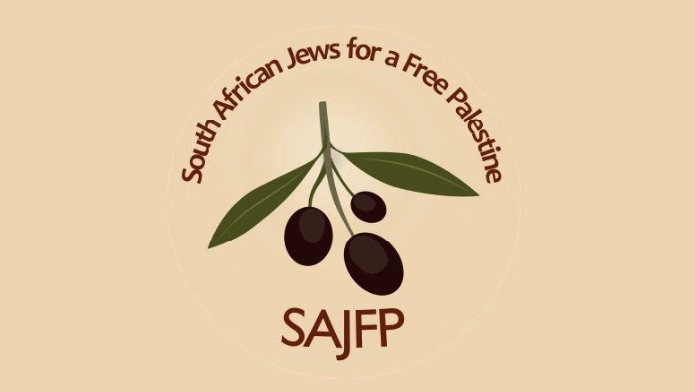SAJFP welcomes the ceasefire deal and the Israeli army’s concession that it will withdraw entirely from Gaza. A new struggle begins to ensure the deal is fully implemented. An old struggle remains – to end the occupation, dismantle Zionism, and free all of Palestine.
On Saturday, news broke that the Israeli government’s full Cabinet had finally caved and agreed to end its genocide in Gaza. The agreement, set to begin this coming Sunday, is a multi-staged deal. It would begin with a partial withdrawal and captive exchange during the first 42 days (Phase 1), a full withdrawal and another captive exchange during the second 42 days (Phase 2), and, finally, reconstruction during Phase 3.
The details of the agreement are as follows:
- Phase 1 – 42 days:
- Interim ceasefire and end of military activity in Gaza
- Exchange of 33 Israeli captives held by Palestinian organisations for over a thousand Palestinian captives held by Israel
- Israel’s partial withdrawal to outskirts of Gaza
- Gazans allowed to return to the North
- Israel permits about 600 trucks of aid into Gaza per day
- Phase 2 – 42 days:
- Exchange balance of active duty Israeli soldiers held by Palestinian organisations for more Palestinian hostages held by Israel
- Permanent ceasefire and full Israeli withdrawal from Gaza
- Phase 3 – 42 days
- Exchange remainder of dead bodies
- Implementation of reconstruction plan
- Opening of border crossings with free movement of goods and people
If seen through, the agreement will come as a massive relief for about two million Palestinians living in Gaza, who have endured one of the most brutal and sustained campaigns of collective torture and mass killing in the modern era. Officially, almost 50,000 people have been killed. But the correct total, which will only be known many months from now, is likely to exceed 100,000 people or more than five percent of Gaza’s population. Many more Gazans have also been maimed, tens of thousands of children orphaned and entire extended families wiped off the face of the earth. The region’s hospitals and educational facilities have all been destroyed, and the entire population will be left with severe life-long trauma.
The deal could mean that, finally, Gazans will have a chance to rebuild their lives – or a semblance thereof. That is, if Israel follows through with the stipulations of this agreement. Unfortunately, the Israeli government has a history of reneging and breaking such agreements. Its most recent deal with Lebanon is a case in point. According to the UN, despite committing to ceasing hostilities, Israel has unilaterally violated the agreement hundreds of times, firing on and killing innocent people with impunity.
Given its track record, the Israeli government will likely exploit any vague provision and loophole it can find in the agreement. Key figures in the Israeli government have already said that they would delay the implementation of Phase 2 indefinitely or re-invade Gaza once they receive the hostages back. Israel is likely to do whatever it can to frustrate goods and aid from entering Gaza and maintain its near twenty-year-old criminal blockade on the enclave.
Even if this agreement leads to a lasting cessation of hostilities, the work of the movement for Palestinian freedom continues. While the world has focused on the horrors unfolding in Gaza, repression in the West Bank has escalated, amid the threat of further settlement expansion and annexation. The ICJ ruling declaring the occupation illegal and calling on Israel to leave the occupied territories has been all but ignored. Meanwhile, Israel continues to occupy more Syrian land, and to violate the terms of their ceasefire agreement in Lebanon.
Gaza, itself, will remain under threat. Images depicting the Zionist vision for Gaza – with luxury accommodation for Israelis built on the ruins of destroyed Palestinian homes – continue to widely circulate on the internet. As long as the colonial impulse remains, we must not rest.
Just as concerning are indications that incoming US President Donald Trump persuaded Israeli Prime Minister Benjamin Netanyahu to accept the ceasefire agreement as a quid-pro-quo that includes massive concessions for the Israeli government. Reports suggest that in exchange for agreeing to the ceasefire, the US may back an Israeli attack on Iran, ensure Saudi Arabian normalisation with Israel, and even recognise Israel’s intended annexation of the West Bank. The work to ensure that this ceasefire deal becomes a path toward the total freedom of the Palestinian people, rather than a blueprint for their continued oppression, remains urgent.
This means that we cannot relax. We must continue to exert whatever pressure we can on Israel and its colonial sponsors, such as the United States. We cannot allow the Israeli regime to go back on any provision in this agreement, particularly since the threat of genocide remains.
While the potential for a ceasefire brings much needed hope and relief for the people of Gaza at this time, the struggle against the Zionist ethnostate and the Israeli occupation of Palestine continues. We remain committed to fighting for Palestinian rights, including for the right of return and self-determination for the Palestinian people. There will be no end to resistance as long as this right is not addressed, and there will be no lasting peace without justice.
Ceasefire now, liberation tomorrow! Aluta Continua!
For more information, email [email protected], or contact:
Rina King @ 082 854 5692
Jared Sacks @ 081 583 3228

